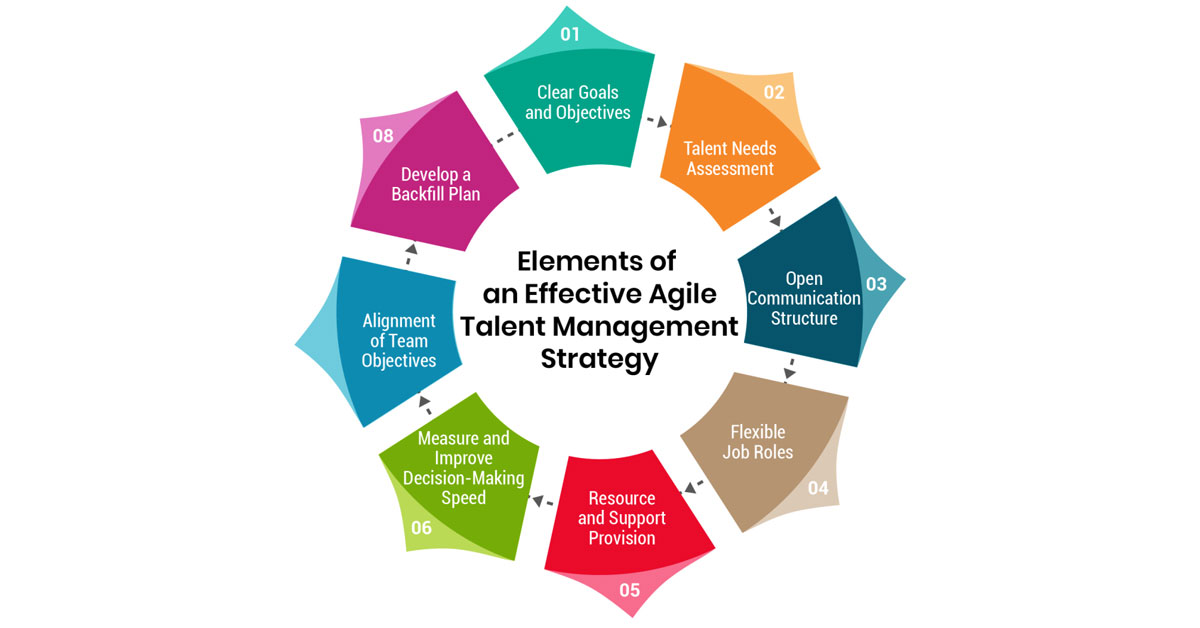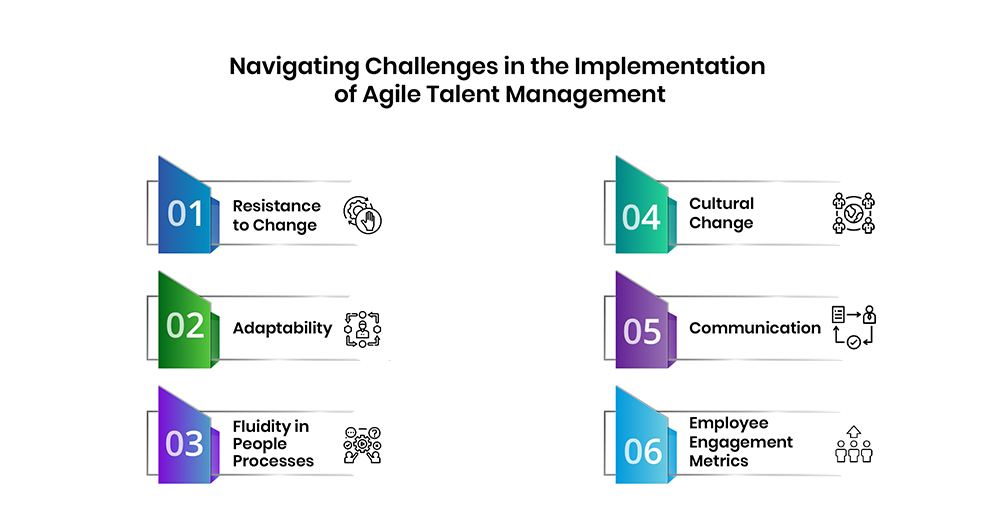
Agile is no longer exclusive to tech; it has found its roots in HR too!
With the business landscape changing rapidly, traditional talent management strategies have failed to deliver the desired results. This is where agile talent management comes into play.
This innovative talent management strategy allows organizations to adapt and respond quickly to changing market demands. In this article, we will explore the concept of agile talent management, its benefits, key elements, and challenges of implementing an agile talent management strategy.
Agile talent management takes inspiration from the agile methodology commonly used in software development. It revolves around the idea of cross-functional teams working together iteratively and collaboratively to deliver value. In the context of talent management, this means breaking down silos and fostering collaboration between HR, managers, and employees.
Fundamentally, agile talent management is about fostering an environment that empowers employees to assume responsibility for their personal development and growth. This entails offering the necessary support to take initiative and enhance their skills proactively. It involves applying agile methodology to the development, management, and retention of talent.
To develop an effective agile talent management strategy, organizations need to consider several key elements—

Implementing an agile talent management strategy offers several benefits to organizations.
An agile talent management approach necessitates the ability to swiftly and flexibly adjust strategies and methods, potentially as frequently as each quarter, in response to the evolving demands of the talent marketplace.
Evaluating the success and challenges of talent management strategies is essential to ensure continuous improvement and drive organizational effectiveness. Implementing an agile talent management strategy also comes with its challenges.

To illustrate the power of agile talent management, let's look at what top leaders have to say about implementing agile talent management strategies in today’s time.
Drowning in macroeconomic uncertainties, cost pressures, and talent shortage, leaders are more than ready to implement new components to make their organizations more agile.
Director of HR at Rupeek, emphasized the importance of incorporating data tools in HR decision-making. He stated, "To enhance informed and productive decision-making, organizations should harness specialized HR products and solutions. These tools can swiftly unlock pools of unfiltered, real-time workforce data, providing valuable insights for effective HR strategies."
Agile talent management cultivates a culture marked by innovation, collaboration, and continual learning, aiming to establish a flexible and responsive system capable of swift adaptation to evolving business requirements.
Highlighting the need for adopting an agile and adaptive HR model, the CEO of PeopleStrong, stated, "Inability to adapt to these constant transformations in the external environment can render a business obsolete. This holds true in the talent management landscape, where retaining employer brands becomes challenging due to evolving and diverse talent expectations. Therefore, establishing an agile people management strategy and utilizing a talent operating system empower companies to swiftly respond to the dynamic shifts in talent needs."
By adopting an agile approach, organizations can respond quickly to changing needs, identify skill gaps, and provide targeted learning opportunities to fill those gaps.
Implementing an agile talent management strategy is not an easy task. However, organizations should establish strategic partnerships with HR solution providers that prioritize data-driven and talent-focused approaches. By embracing these, organizations can unlock the full potential of their talent pool and drive innovation and growth.

CredBadge™ is a proprietary, secure, digital badging platform that provides for seamless authentication and verification of credentials across digital media worldwide.
CredBadge™ powered credentials ensure that professionals can showcase and verify their qualifications and credentials across all digital platforms, and at any time, across the planet.

Please enter the License Number/Unique Credential Code of the certificant. Results will be displayed if the person holds an active credential from TMI.